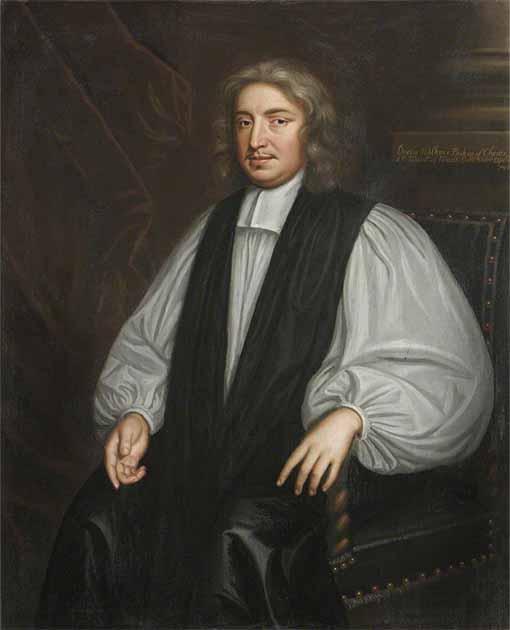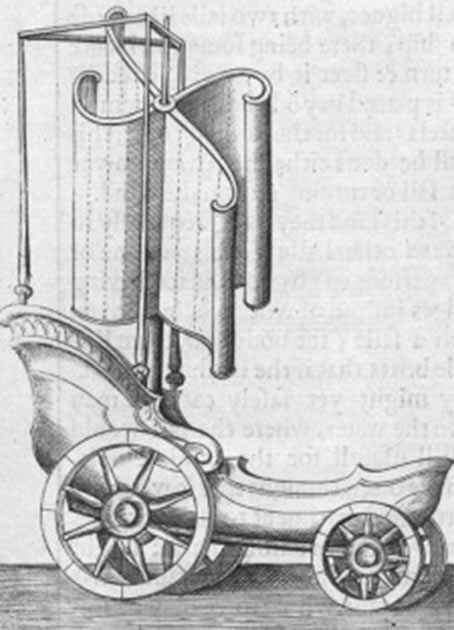
Astronomer John Wilkins Planned a Moon Mission in 1640 AD with a Flying Chariot!
In 1961, Russian cosmonaut Yuri Gagarin became the first human to orbit the Earth. In 1969, the American Apollo 11 moon mission placed the first human boots on the surface of the moon. These nations, however, were hardly the first to contemplate the stars and ponder the possibility of space travel. Humanity has long wondered at the sky and sought to take flight, and it was in England, 1640, that a man of science first proposed a manned moon mission, and it was to be accomplished with a flying chariot!
John Wilkins Was A Clergyman, Mathematician, and Astronomer
John Wilkins was a mathematician, astronomer, and a member of the clergy. He was born in 1614 to goldsmith Walter Wilkins and Jane Dod, a descendant of Northamptonshire gentry. Educated at Magdalen Hall, Oxford in mathematics, Wilkins was also an ordained member of the Church of England.
- Five Ways Ancient India Changed the World – With Math
- Are These Incredible Historical Coincidences Actually Due to Synchronicity or Mathematical Probability?
Throughout his life he would serve in multiple high-ranking positions, both academically and ecclesiastically. In 1644, he was appointed chaplain to Charles Louis, at the time the Prince Elector of the Palatine; in 1648 he was made Warden of Wadham College, Oxford, and would go on to help found the Royal Society of London for Improving Natural Knowledge in 1660. Wilkins threaded both worlds well, but also argued for the separation of science and scripture in his 1640 book, A discourse concerning a new planet.

A circa 1670 AD portrait by John Greenhill (attributed) of John Wilkins, a 17th-century English clergyman and a prolific scientific scholar, who was likely the first to try to build a contraption to fly humans to the moon. (John Greenhill / Public domain)
In John Wilkins’ Time the Moon Was Truly Another Planet
The prevailing (though shifting) wisdom of John Wilkins’ time was that celestial bodies like the moon were made very differently from Earth, and as such did not obey the same natural laws. Wilkins published A Discovery of a New World…in the Moon in 1638 (to which Discourse would be added as an addendum in 1640) to challenge this thinking.
He argued that the moon was a natural object made of stone and with an atmosphere of its own by comparing its features with those of Earth through telescopic observation. Though Wilkins was hardly the first to put forward these ideas (indeed, the book is largely a defense of Galileo and Copernicus), he did present the ideas in language the average person could understand and even included illustrations. The book also includes a chapter dedicated to exploring the challenges and mechanics of a potential journey to the moon.
Defeating the Forces Of Earth and Surviving in Space
Wilkins anticipated and sought to overcome numerous objections and challenges when planning his space and moon mission program. Firstly, the mysterious force holding earthly objects to the ground – Aristotle’s gravitas – must be overcome. This Wilkins viewed as akin to magnetism.
Building on the work of William Gilbert, Wilkins observed that the strength of attraction between two objects varied by location and weakened across distance. Thus, one need only escape the range of Earth’s attraction and it would be smooth, easy sailing from there on.
Using a series of methods, including geometry and trigonometry, Wilkins posited that Earth’s attraction ended twenty miles (32 kilometers) above its surface.
It was, however, well known that temperatures dropped drastically the higher one went up a mountain and the air became thinner; presumably, the air in space would be much thinner. Despite his own argument against mixing scripture and natural science, Wilkins turned to theology to deal with these issues.
He argued that mountain peaks froze because they were closer to the clouds, which God created before the sun and are therefore cold. As for air, Wilkins reasoned that the air became thinner as one drew further away from the world of men, one polluted with sin. The cleaner air was something man’s lungs were not accustomed to but would acclimate. Both issues would resolve themselves beyond the twenty-mile (32-kilometer) line; the air would be warm, unpolluted, and completely breathable.

John Wilkins' improvement of Stevin's sailing chariot featuring movable sails (p. 160 of Mathematical Magick published by John Wilkins in 1648). (Historia Mathematica / Deutsches Museum)
Math Magick: John Wilkins’ To-the-Moon Flying Chariot
In 1648, Wilkins published his book Mathematical Magick; or, The wonders that may be performed by Mechanical Geometry, in which he put forward a series of designs for wondrous machines. One of these was the Flying Chariot, a device intended to convey mankind to the moon.
The chariot, designed according to nature, would use wings to fly, powered by springs and wheels and a bit of gunpowder to get things moving. Wilkins discusses what material should coat the wings, ultimately recommending constant experimentation with numerous mediums to find the right one. Robert Hooke, a contemporary of Wilkins, seems to have carried out many of these experiments in his book Micrographia (1665) as he sought to design a machine of his own.
- Imprisoned Murderer Solves Ancient Math Problem
- Remote islanders invented binary number system before famous mathematician
Ultimately, Wilkins Flying Chariot was never made, and his proposed space program was forgotten. Science continued to make new discoveries in the decades following A Discovery and Mathematical Magick that disproved many of Wilkins’ assumptions. The concept of the vacuum in nature was proven, thus rendering travel through space impossible, and the limits of gears, wheels, springs, and torque to hold a machine aloft were revealed. John Wilkins continued to have a successful career, however, and though his space mission never became reality, his work inspired scientists for generations.
Top image: This must have been the imagined landscape of John Wilkins' 17th-century moon mission just as his flying chariot left the clouds behind. Source: flashmovie / Adobe Stock
By Mark Johnston
References
Chapman, A. 1991. A World in the Moon – Wilkins and his Lunar Voyage of 1640. Available at: https://articles.adsabs.harvard.edu//full/1991QJRAS..32..121C/0000122.000.html.
Chapman, A. 2014. Fly Me to the Moon. Available at: https://academic.oup.com/astrogeo/article/55/1/1.26/221582.
Mansfield, I. 2018. England’s 17th century attempt to reach the moon. Available at: https://www.ianvisits.co.uk/articles/englands-17th-century-attempt-to-reach-the-moon-23988/.
O Connor, J. J., and Robertson, EF. 2002. John Wilkins. Available at: https://mathshistory.st-andrews.ac.uk/Biographies/Wilkins/.
















Comments
'the American Apollo 11 moon mission placed the first human boots on the surface of the moon.'
Yes, but were there feet in the boots?